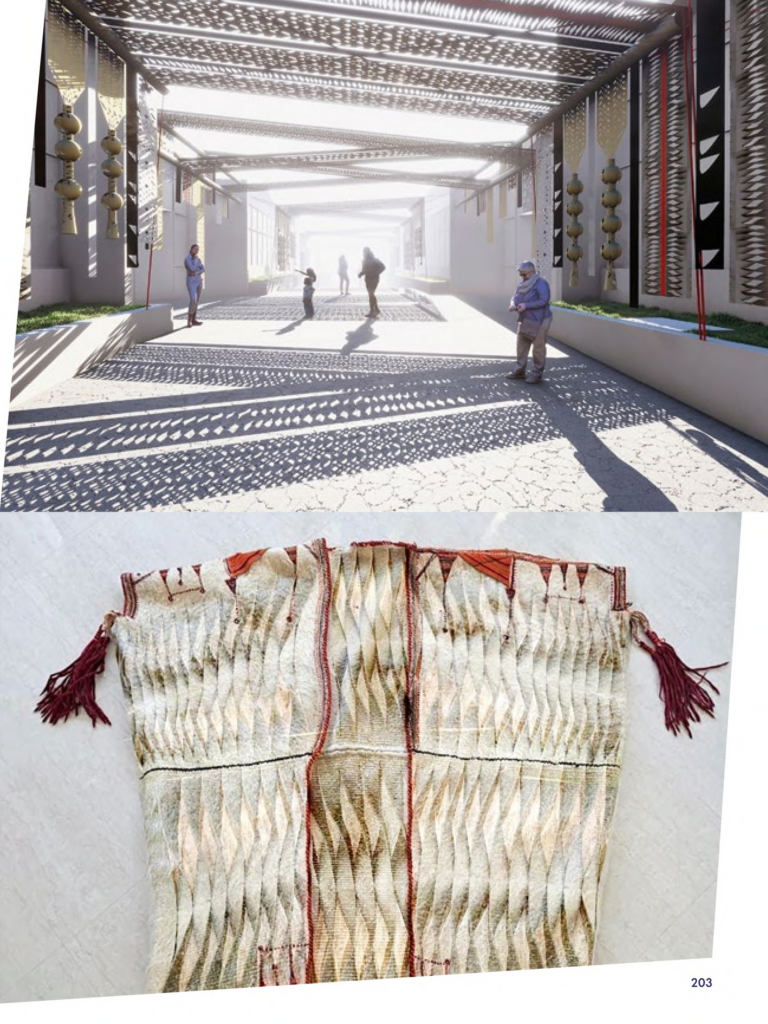AZRA AKŠAMIJA
Born 1976 in Sarajevo, Bosnia and Herzegovina, lives and works in Boston, MA, United States
Abundance & Scarcity
2024

Azra Akšamija is an artist and architectural historian whose artistic practice and academic research leverages critical methods to restore the social value of cultural heritage. In her multidisciplinary work, Akšamija embodies the politics of identity and memory into objects such as clothing and wearable technologies. Her recent research work focuses on the representation of Islam in the West. She is the director of the Future Heritage Lab and the Art, Culture and Technology program, both at MIT. She has not only published widely but has also recently shown her work in major international exhibitions, including the 17th Venice Architecture Biennale (2021), The Aga Khan Museum, Toronto (2020), and Kunsthaus Graz (2019).
Situated on an outdoor terrace, the commissioned work Abundance & Scarcity (2024) consists of a shading canopy made of refugee blankets and felt recycled from the 2023 Islamic Arts Biennale in Jeddah. Particularly suited for extreme environmental conditions of the desert, its construction is based on a modular textile system borrowed from the Saudi Arabian fabric known as bisht, traditionally made from goat wool and camel hair. These textile components are arranged in strips and sewn into larger coverings, which are spanned over a simple metal frame. The effect is a vibrantly colored pavilion. As a shelter made of cloth, it is also inspired by the traditions of nomadic cultures, including Saudi Arabian nomadic tribes. Sculptural and decorative elements are created by a technique of slashing, folding, and reverse appliqué. In collaboration with local plant experts, native desert plants such as medicinal plants, spices, and fragrant flora are integrated into the installation in sewn-in sachets of potpourri, which generate a refreshing scent.
Abundance & Scarcity is rooted in Akšamija’s notion of performative preservation, which prioritizes the revitalization of living social practices that underpin the creation of material artifacts and monuments. Beyond the exhibition, the surplus felt fabric will be donated to refugee camps, allowing the artwork to continue its environmental and social mission post-exhibition. This initiative underscores the transformative role of art in advocating positive practices and interventions to address both societal challenges and environmental issues. Akšamija’s approach as a whole is committed to addressing the complex challenges faced by communities affected by conflict, displacement, and ecological crises.
